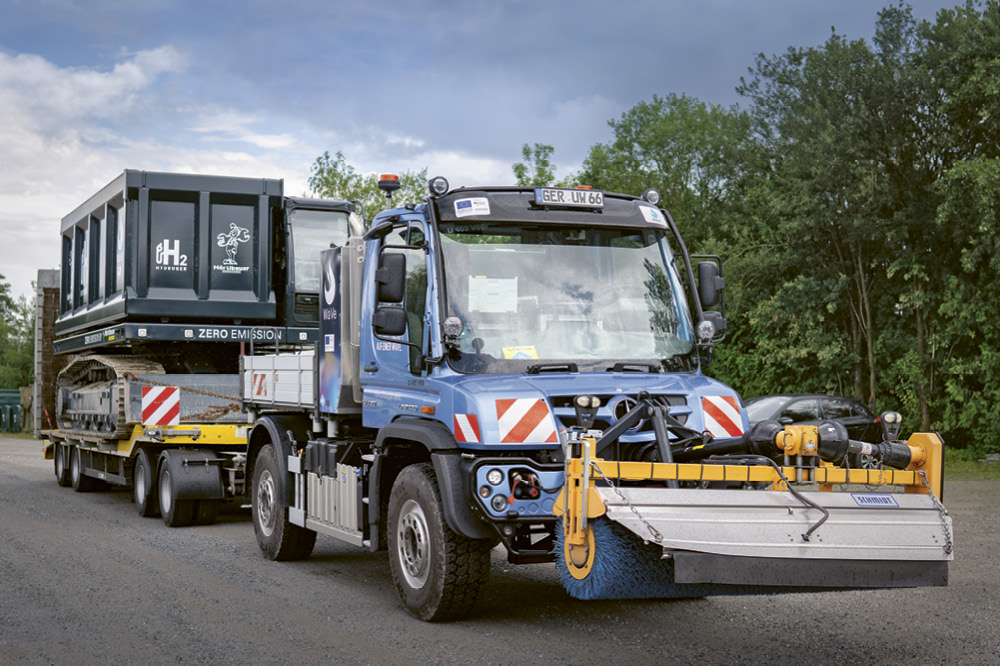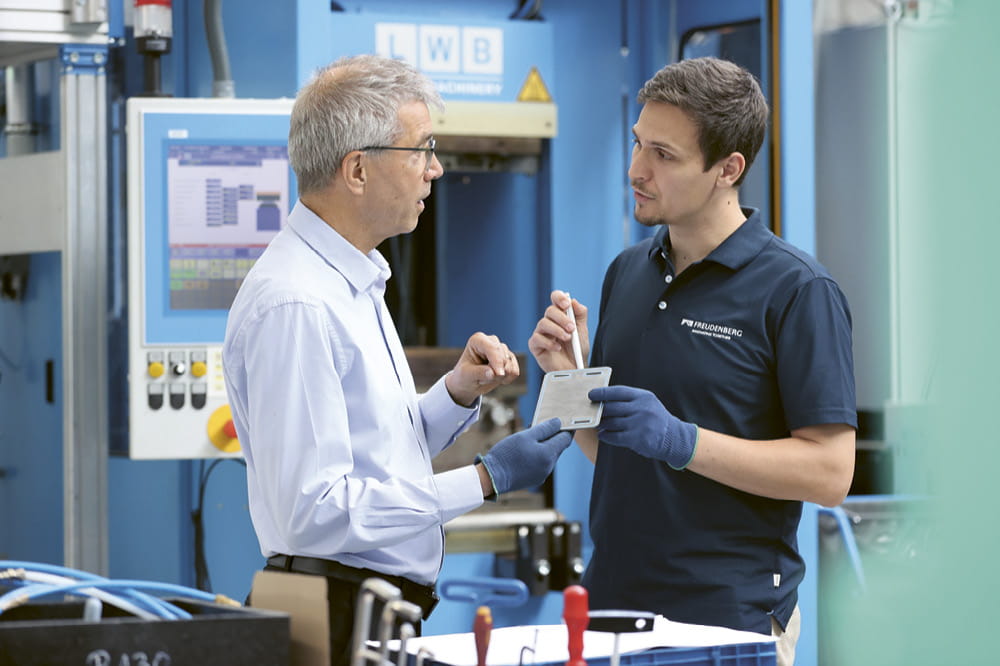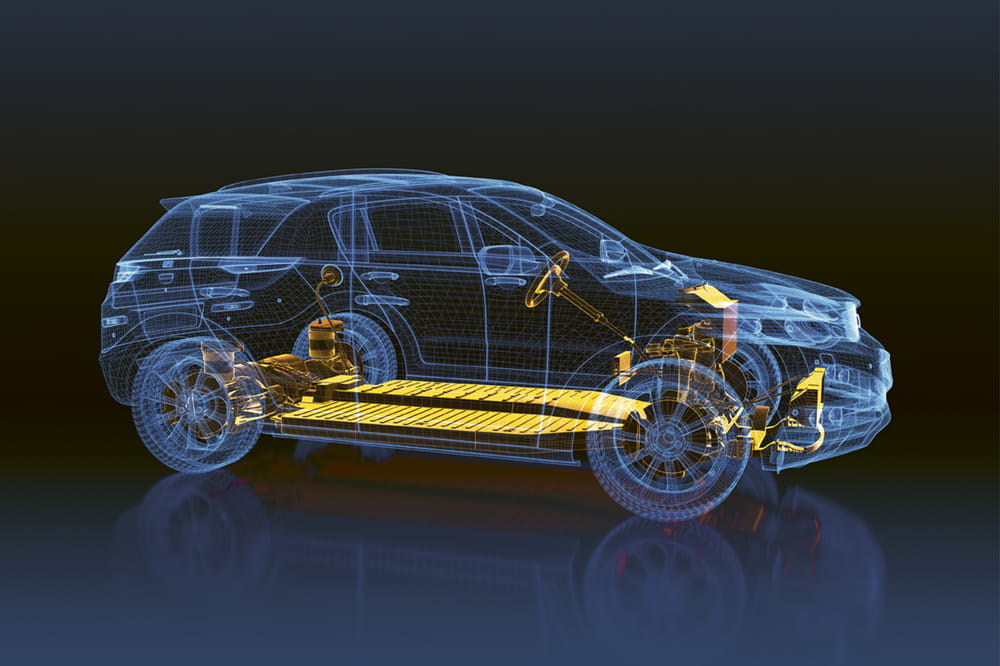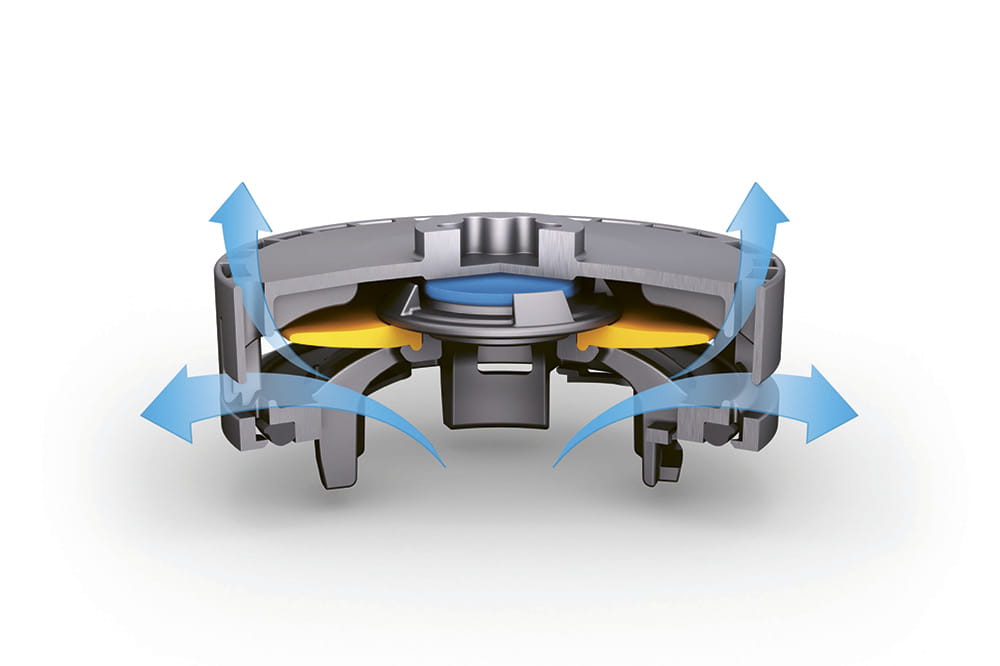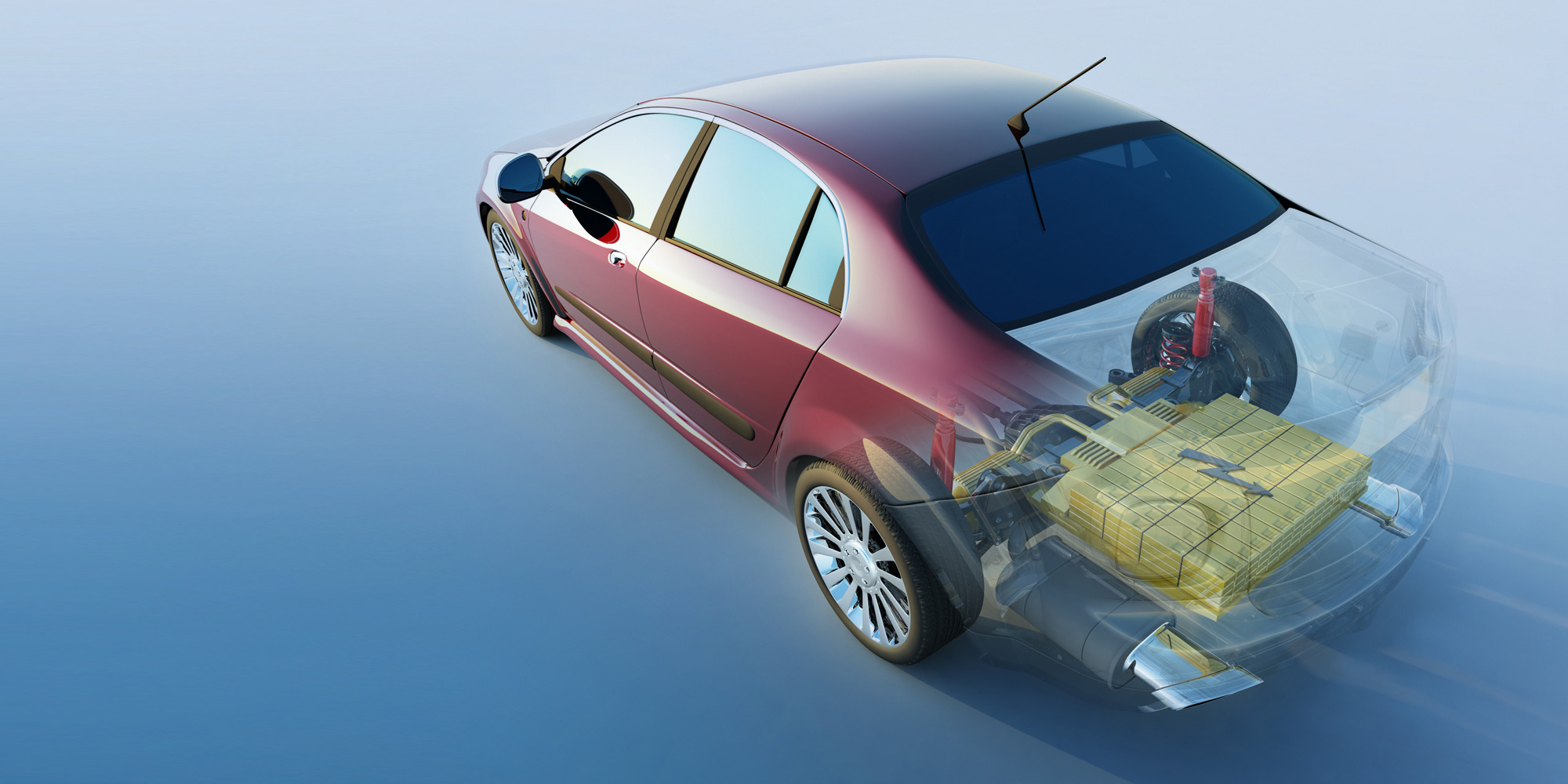
Safe Energy from Batteries
With the new generation of electric vehicles, the requirements for their batteries are rising. Among other things, better thermal management and increased safety are in demand. Freudenberg Sealing Technologies already anticipated this stage years ago.
Lithium ion batteries are in flux. With the next generation of electric cars already arriving this year, the demands on batteries are changing as well: more energy, faster charging times. “From now on, batteries will be subject to the greatest stress during charging – not during driving and accelerating anymore,” said Dr. Peter Kritzer, Innovation Leader at Freudenberg Sealing Technologies. But that also means safety requirements are greatly increasing. “If I have double the energy in the same space, the chemical reaction resulting from it is not just twice as fast – it is faster many times over,” Kritzer said. That brings issues like thermal management and safety more fully into focus. “Years ago, we developed a number of concepts relating to how the safety, in particular, of such systems can be improved,” he said.
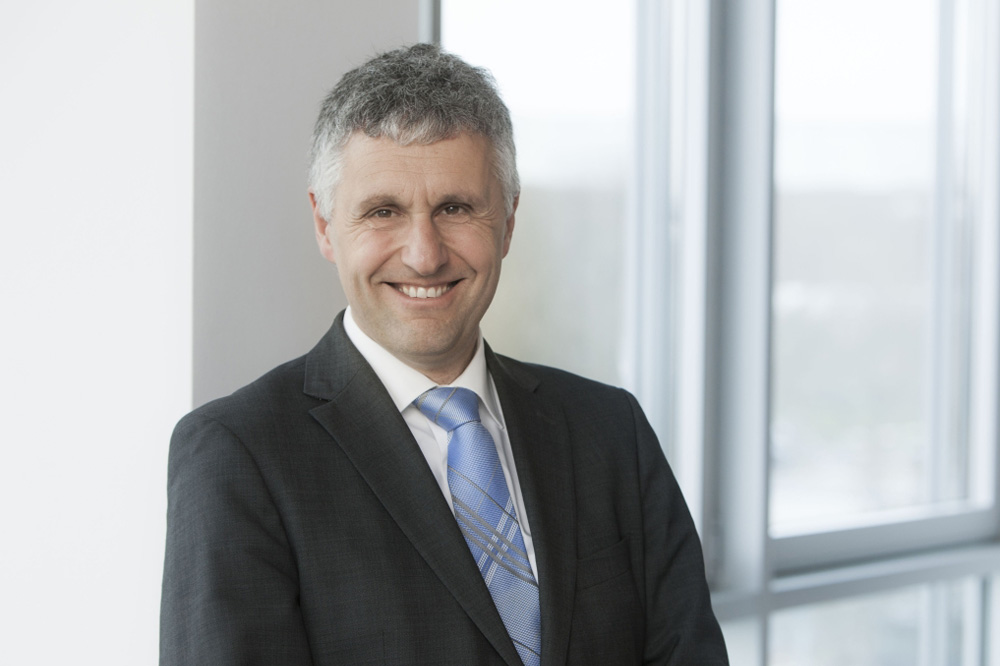
Kritzer, an expert in electric mobility, has just returned from the Advanced Automotive Battery Conference (AABC), a renowned international gathering of the battery technology industry, which attracted about 800 participants. He presented various concepts in a lecture there. “Three years ago, the appeal of these concepts was rather limited because the first generation of lithium ion batteries was quite tame,” he said. “This time the interest was great.” Without being prompted, more than a dozen attendees wanted to meet for further discussions. In the meantime, the number of requests has quadrupled. This also has to do with the fact that Freudenberg Sealing Technologies is offering automakers the chance to jointly develop concepts and then team up to implement them in series production. The focus here is on the overall approach to battery safety as well as on seals. “Freudenberg has been supplying separators for battery cells for 50 years,” Kritzer said. “We can talk – and develop – with customers on the same level.” This is evidently an important advantage for many automotive engineers who are facing severe time pressures in light of the rapid developments in electric mobility.
Faster Charging at Higher Density
It is clear that electric cars are taking the next step. While most vehicles have only been able to drive about 150 km on a single battery charge until now, the next generation will more than double that distance. But their components so far have been geared to shorter ranges. “To achieve the objectives, the energy density in the individual cells has been increased, and the cells have been packed more closely in the battery system,” Kritzer said. In addition, this second generation of electric cars was conceived for an electric powertrain – for this reason, more space is available for the battery system, meaning it can be larger. Since the issue of fast charging is becoming more important and batteries should preferably recover 80 percent of their capacity in 15 to 30 minutes, increased energy flows are required – all the more if the energy output of the battery rises at the same time. But these energy flows lead to greater battery heating during charging – a new situation compared to earlier electric cars. “If the components of the prior battery systems are just taken on for the new battery generations, safety-relevant issues can emerge,” Kritzer said.
Freudenberg has supplied separators for battery cells for 50 years. We can talk – and develop – with customers on the same level.
Dr. Peter Kritzer, Innovation Leader at Freudenberg Sealing Technologies
“In principle, for example, a housing seal for battery systems seems comparatively simple,” he said. But special attention must be paid to the layout in view of the safety requirements: “Just the penetration of water could cause severe damage.” The pressure balance of the battery housing is another issue. In this area, automakers have worked with microporous films until now. They were in fact especially watertight but hardly permeable to air at all. The battery in turn needs an exchange of air and elements with large surface areas, which enlarges the system. One of the developments that Kritzer presented to the audience at his AABC lecture was a special pressure equalization element, a joint development with the Lead Center Diaphragms. It contains a nonwoven that is watertight yet displays a much greater permeability to air than microporous film. And even more, it functions as a degassing element in emergencies. “In this way, we get by with just one-fifth or even one-tenth of the space while offering the added value of pressure degassing and overpressure functions,” Kritzer said.
Partner for Cooling and SafetyOther examples of the company’s developments include a specially designed piston in which a battery can, so to speak, breathe in. In this way, the battery system can be completely sealed off from the environment. That translates to protection from moisture as well as a simultaneous opportunity to charge the system with a protective gas atmosphere.
“Our general approach involves thinking a step further with the customer,” Kritzer said. “We have many ideas in reserve and many of them are patented as well.” This makes it possible to develop complete modules and systems with automakers, and not just respond to specific requests. “We see ourselves as a partner for cooling and safety.” Freudenberg Sealing Technologies has meanwhile founded a special organizational unit to meet electric mobility’s new requirements. For Kritzer, it is clear that the vehicles following the next generation will usher in the breakthrough for electric mobility. “And when electric cars are in the market in large numbers, the safety requirements will increase even more.”
For more information on Freudenberg Sealing Technologies’ engagement in E-Mobility click here.
More Stories About E-Mobility

